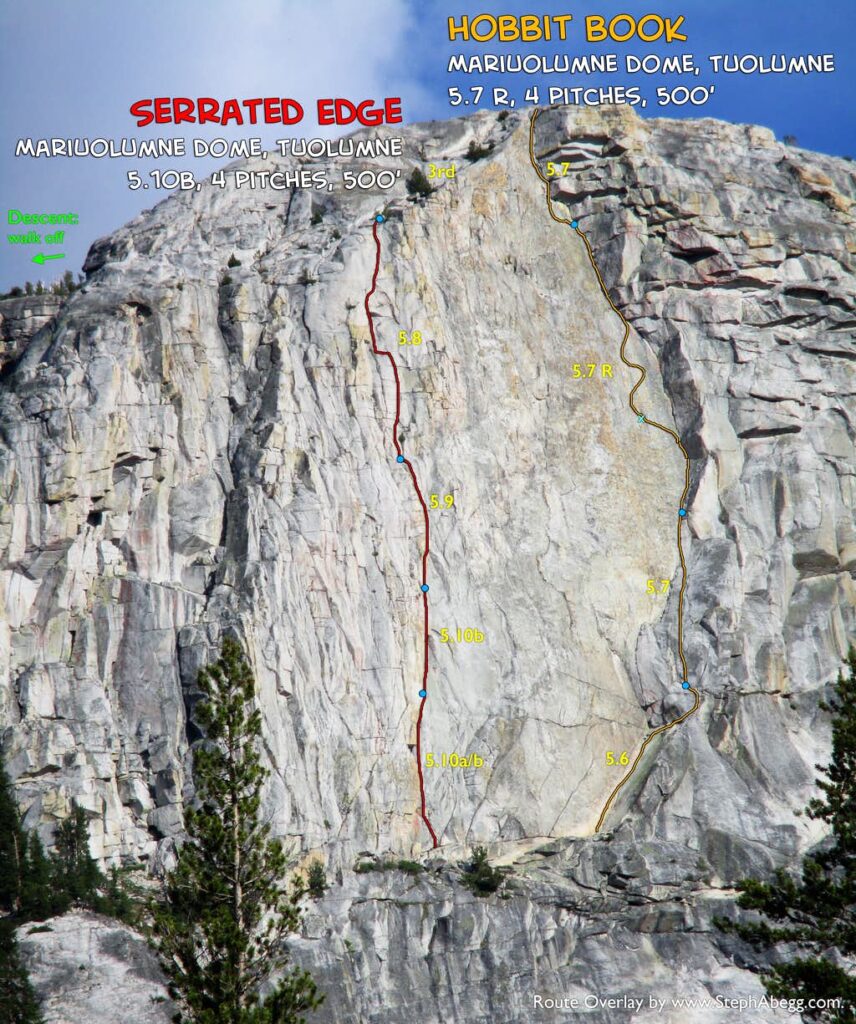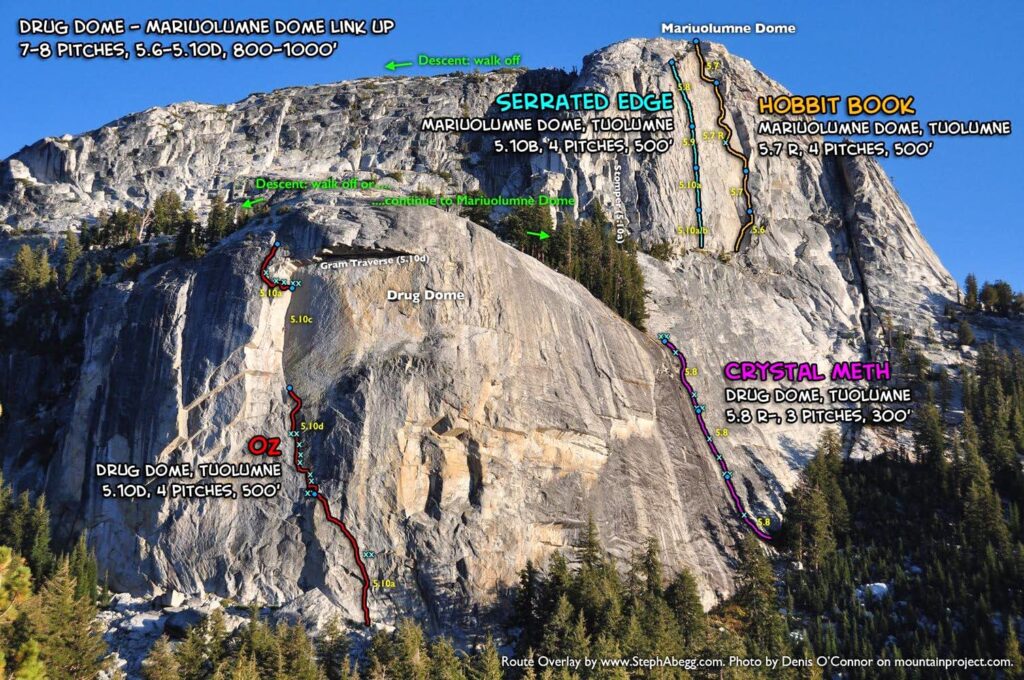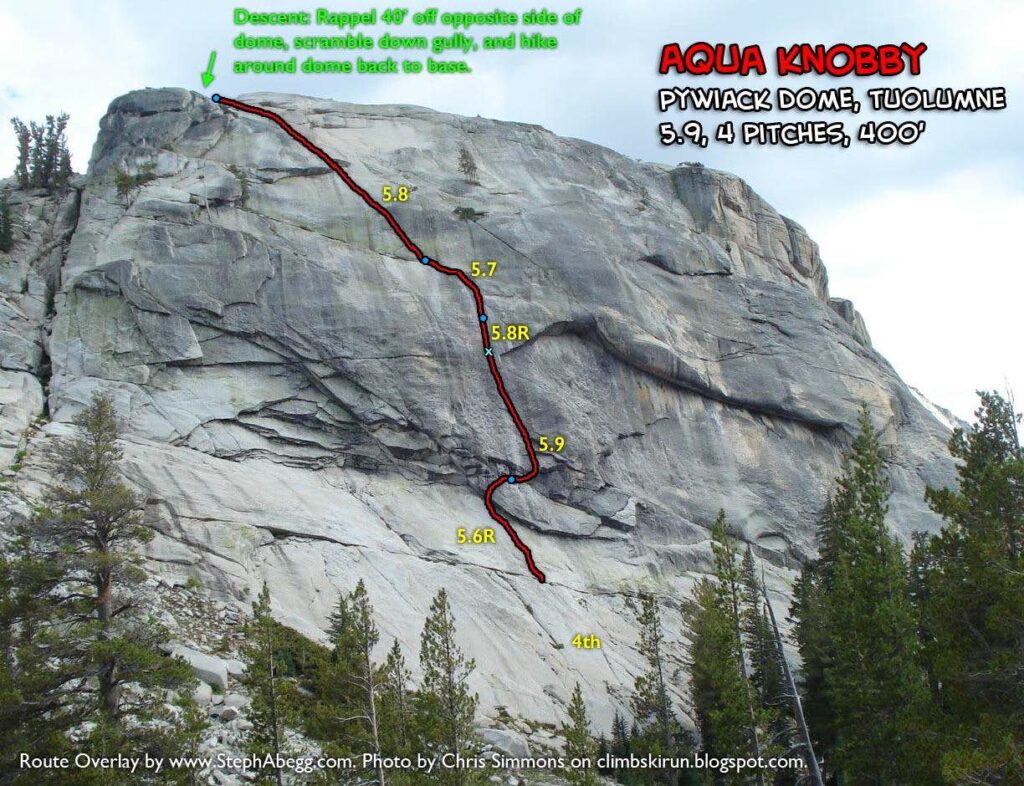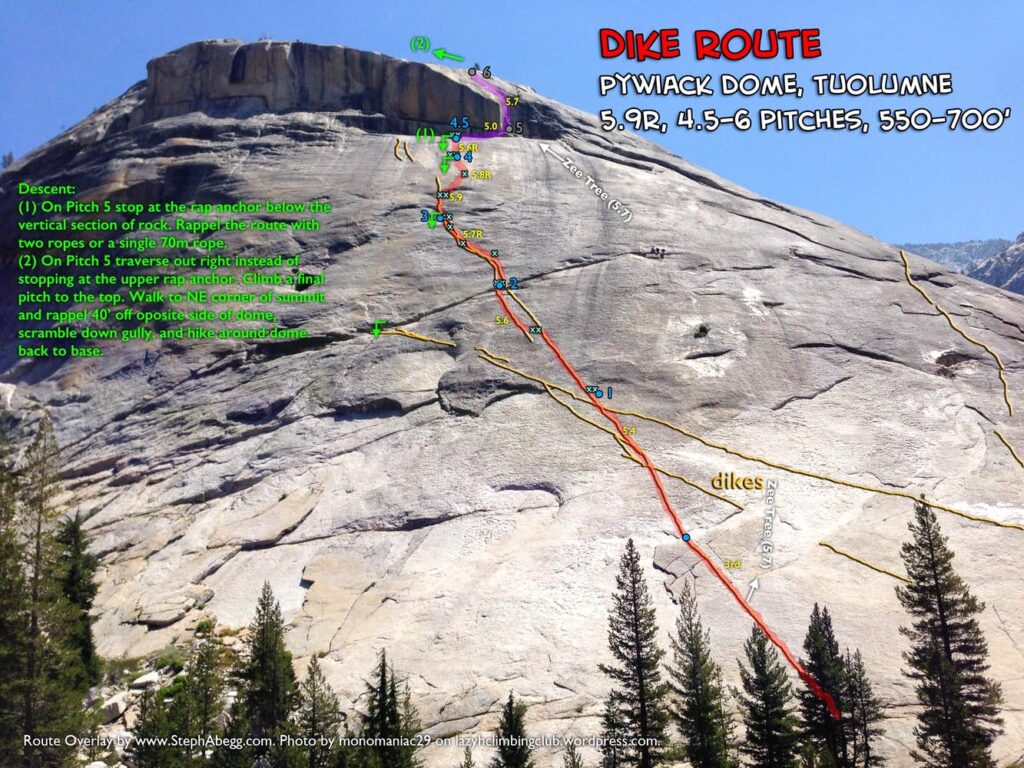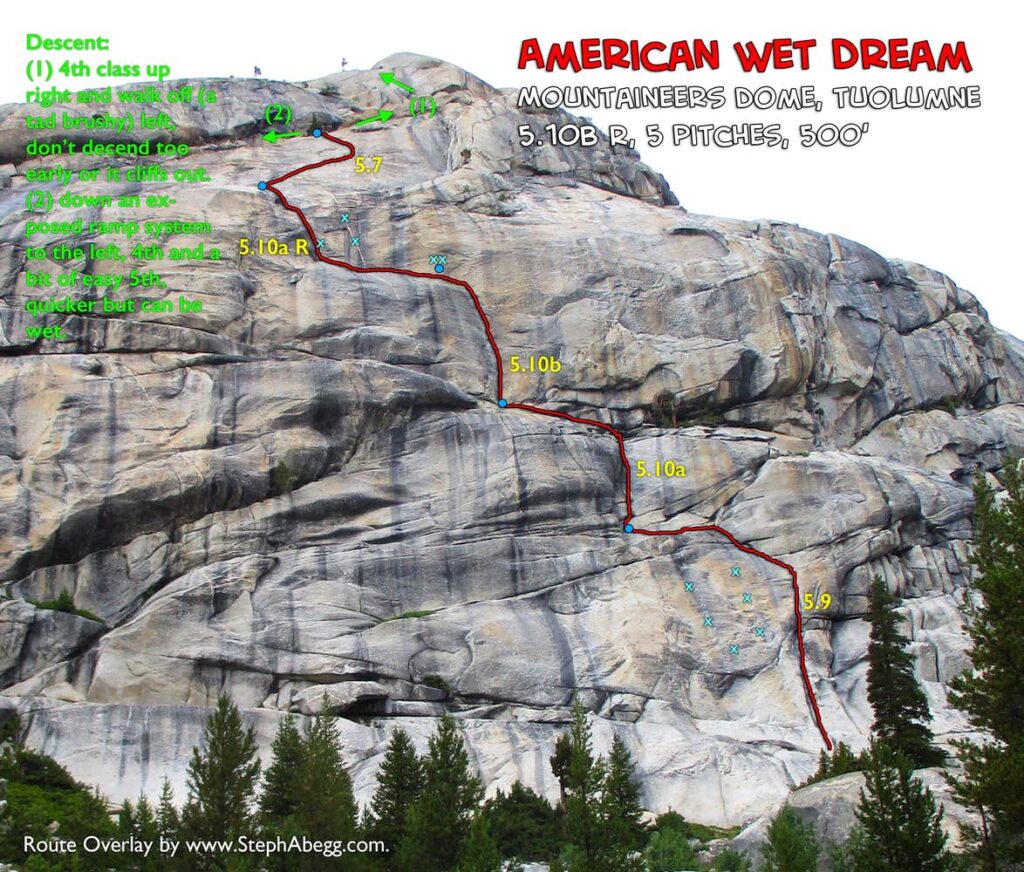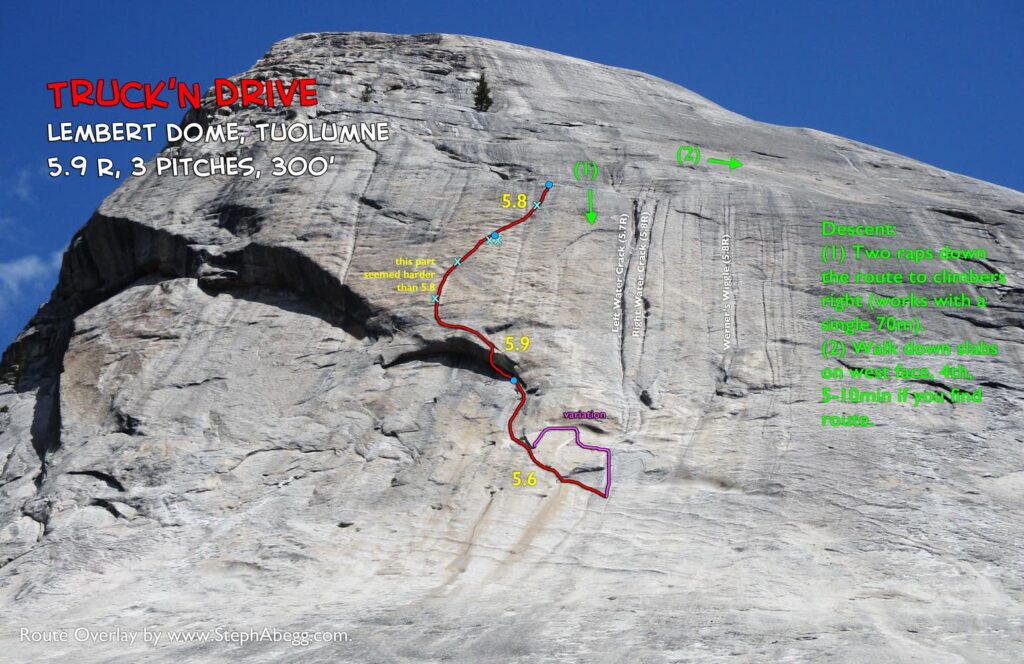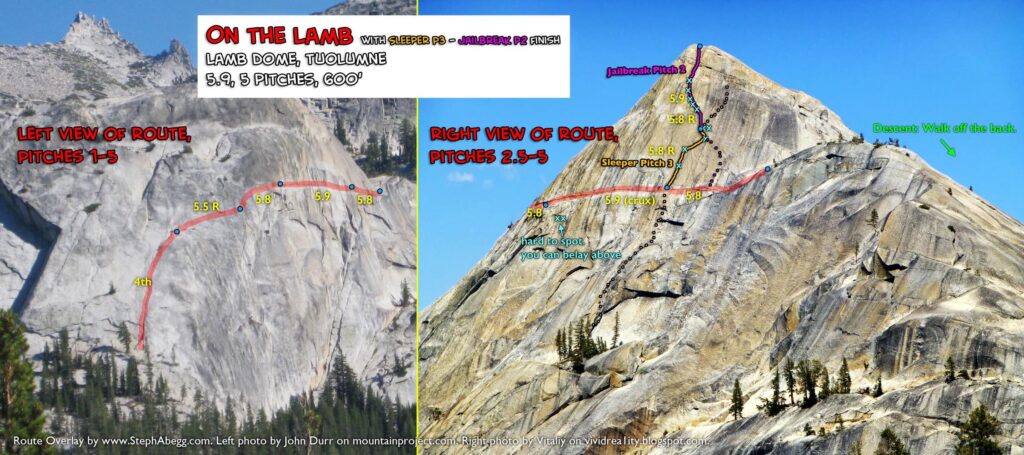A Week in Tuolumne
Routes:
- Oz (5.10d, 500')
- Hobbit Book (5.7 R, 500')
- Aqua Knobby (5.9, 400')
- Dike Route (5.9 R, 450-600')
- American Wet Dream (5.10b R, 500')
- Direct NW Face (5.10b, 400')
- Truck'N Drive (5.9 R, 300')
- Little Sheeba (5.10a, 90')
- On the Lamb (5.9, 500')
- Crystal Meth (5.8 R-, 300')
- Serrated Edge (5.10b, 500')
Finally I feel like I can say I've climbed at Tuolumne.
Region: California
Elev: 9,000-10,000 ft
Rock type: Granite
Type:

Date(s): July 7-13, 2015 (Tue-Mon)
Partner(s): Dow Williams

